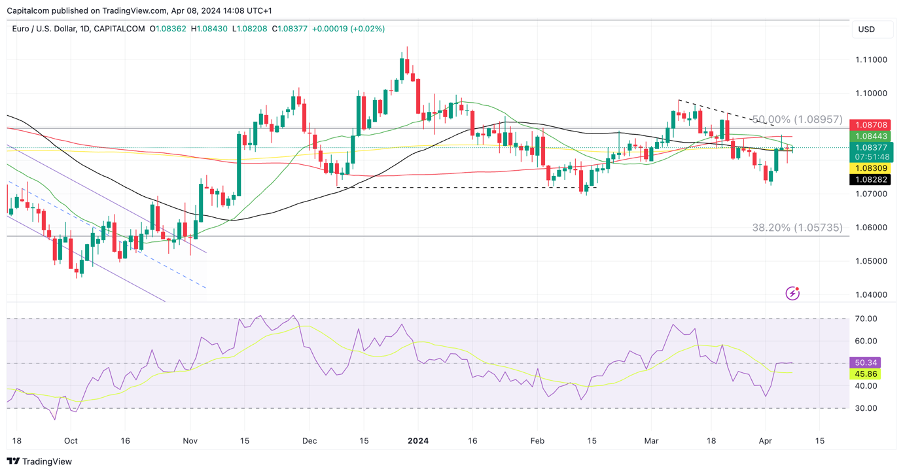ECB Preview: rate-cut timeline expected
Markets expect the ECB to confirm a rate cut in June
There is still much speculation regarding when many central banks will start to cut rates, but markets remain hopeful that the European Central Bank will take the step in June. For the meeting this week, there is currently less than a 10% chance that the ECB will cut rates by 25 basis points, but markets are expecting President Lagarde to lay down the narrative for a cut at the next meeting on 6 June.
Lagarde already made a strong speech at the ECB watchers conference three weeks ago, pointing to the June meeting as the pivotal one to start dialling back restrictive policies. With this in mind, expectations are high for her to confirm – explicitly if possible – that rates will indeed be cut in June at the meeting this week. Any deviation from this would likely spark volatility in markets, especially for the euro, which could recover some of the lost momentum it’s experienced in recent weeks.
It seems unlikely this will happen given the recent data. Consumer prices rose 2.4% in the last 12 months, less than the 2.5% anticipated, and a drop from the 2.6% seen in February. Core inflation – which excludes volatile prices of food and energy – rose 2.9%, the smallest yearly increase in two years. The data confirms that, whilst some areas of concern remain, inflation is returning to the ECB’s long-term target of 2%. At the conference, Lagarde said that given the delays by which data becomes available, the ECB can't wait to have all the relevant information, as this could entail a risk of adjusting policy too late. But she did confirm that the ECB's forward-looking wage tracker is showing early signs that pressure is easing. Because of this, it is not surprising that markets anticipate a rate cut in June.
But could we see one as early as this week? There are only 1.8 basis points of cuts currently priced in for Thursday’s meeting, so it seems highly unlikely. Whilst the inflation data released last week points in the right direction, Lagarde and her team will likely want to wait until the next round of employment data, specifically wage growth. For now, it seems like this meeting will be used to extract as much information as possible about the timing and size of upcoming rate cuts. Any changes in communication will be key, and whilst Lagarde may be reluctant to give away too much forward guidance, there is a high chance she will signal the start of rate cuts in June.
For EUR/USD, the ECB meeting could provide some further direction after indecision has taken over the pair in recent days. The US dollar remains favoured given the pushback from the Federal Reserve to cut amidst stronger economic data in the US, which has been weighing on EUR/USD. Gains have been limited by increased resistance, and the pair could see further bearish pressure if Lagarde does signal the start of rate cuts in June. Rate differentials would play in favour of the USD and could push the pair back below 1.07.
EUR/USD daily chart
 Past performance is not a reliable indicator of future results.
Past performance is not a reliable indicator of future results.